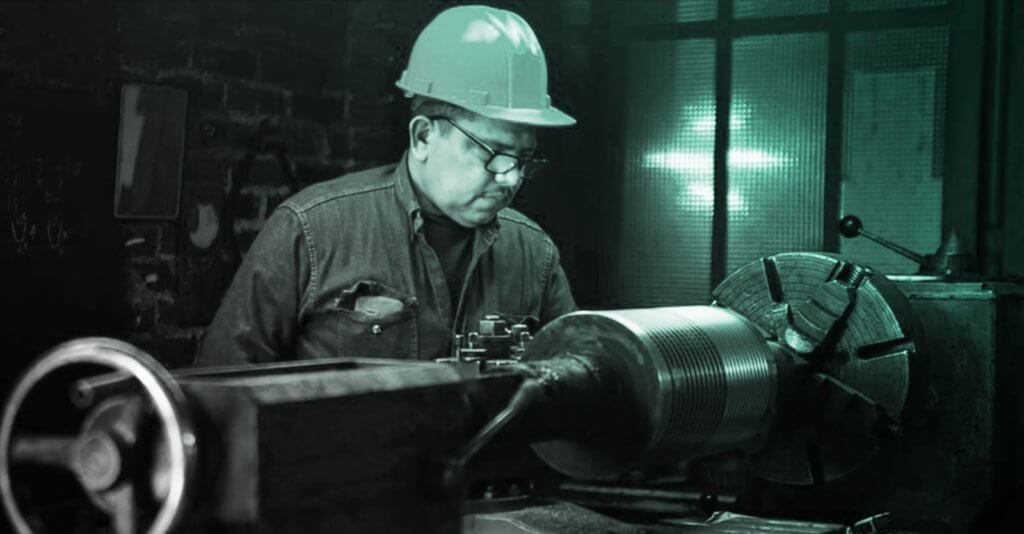For many years the manufacturing sector has been stuck in a rut when it comes to technological advancements. The unwillingness to change current operations has left the industry lagging behind many other sectors. However, things are set to change this decade. Recent reports have predicted that in the next 10 years the expenditure of Industrial IoT will surpass that of commercial IoT. The market for predictive maintenance alone is expected to reach $10.9 billion by 2022.
So, what is causing manufacturers to have a sudden change of heart towards integrating IoT into their operations?
Early adopters who embraced technological advancements are now starting to reap the benefits, providing great industry case studies for the potential of IoT. Many manufacturers that have already adopted IIoT are reporting efficiency gains of 25 to 30%. These impressive results are great drivers for the market and many manufacturers may start to feel the pressure to integrate in order to remain competitive.
Alongside this, many firms were apprehensive about the integration process and assumed it would mean uprooting all of their current operations, creating a major barrier for the IoT market. Yet recently, there has been a change in mindset as solution providers have interoperability in mind, meaning they can integrate the solutions with ease, as IoT sensors can be connected to any legacy asset, saving tremendous amounts in installation costs.
Impressive IIoT
Manufacturing and operational machinery can be retrofitted with IIoT devices to derive the highest level of efficiency possible. IIoT can tackle some of the core challenges faced in the manufacturing sector such as unplanned downtime and high maintenance and energy costs. Whether you’re measuring process values and status information, energy usage, pressure, humidity, flow, or any other metric, IIoT brings this information to a platform with limited disruptions to operations.
Predictive Maintenance
IoT sensors can be applied to any asset and data will be continuously fed into either a cloud-based system or on-premise server. This data is then analysed with machine learning algorithms to provide insightful information into asset health. This continual feed of data means a baseline can be established, where an asset is operating efficiently and if it begins to deviate, instant alerts can be sent to engineers to conduct maintenance. Manufacturers no longer have to rely on time-based or reactive maintenance schedules which are inefficient and cause multiple unplanned downtimes due to broken machinery. Unplanned downtime is the greatest expense for many manufacturers and can cost a company as much as $260,000 an hour.
IIoT offers the potential to create a predictive maintenance schedule, where maintenance is conducted based on asset health and considerably reduces downtime. Manufacturers can streamline their supply chain requirements and making production interruptions a thing of the past.
Conserving Energy
When IoT is integrated with machine learning and artificial intelligence, data can be continuously analysed to create baseline performance measures and automatically recognise patterns and spot anomalies. Say a piece of machinery is operating outside of its standard threshold and wasting excess energy, an engineer can be automatically notified so maintenance can be conducted immediately, avoiding unnecessary energy wastage.
Furthermore, AI can provide additional efficiency through the automated control of assets depending on external factors. For example, the analysis may have shown that there is a particular time in the day when certain assets are not in use and therefore can be switched off or placed on standby to conserve energy.
Compliance
Not only does IIoT provide vital benefits to operational and cost efficiency, but it can also be highly beneficial to maintaining regulatory compliance. Manufacturers are presented with multiple health and safety regulations across their facilities, whether this be quality control, noise levels or regular maintenance. IoT sensors can monitor a range of factors and notify when something is no longer abiding to regulatory standards. Say for example, noise levels exceed what is considered dangerous, an instant alert can be sent to the applicable individual and the situation can be fixed instantly.
Alongside this, manufacturers will have to comply with Streamlined Energy & Carbon Reporting (SECR) regulations, where companies are required to report on their energy usage. IoT provides a higher level of accuracy on total energy usage and makes reporting much more efficient.
The potential of IIoT is truly limitless and new applications are being introduced all the time. It is no wonder that IIoT is now being greeted with open arms and we can anticipate huge changes within the sector.
Hark work closely with clients to review and implement real-time remote monitoring solutions that tackle the unique needs of their facilities. The Hark Platform is agile and has been built with interoperability in mind meaning we endeavour to communicate with every asset on your factory floor.
Whether you’re measuring process values and status information, energy usage, pressure, humidity, flow, or any other metric, Hark’s installation team work with you to bring this information to the platform with zero downtime or disruption to operations.
Get in touch to find out how The Hark Platform can help you maximise the value of your data.



